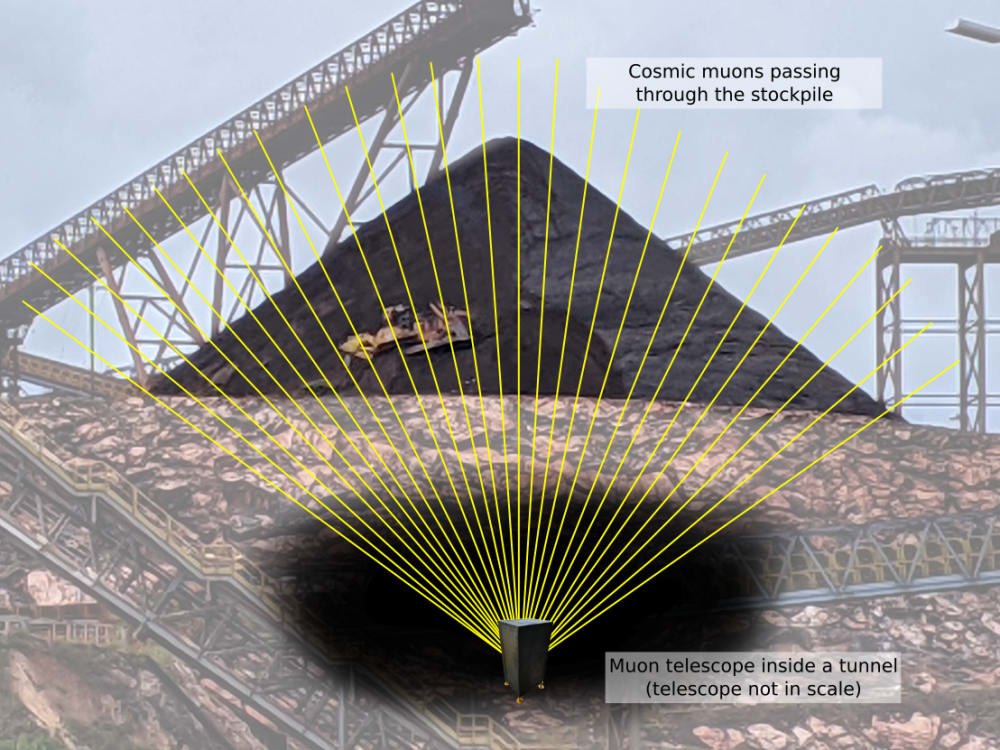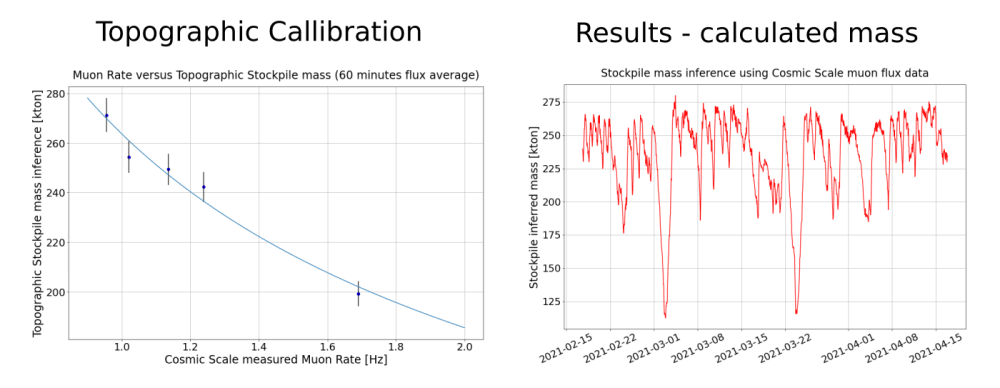

Measuring big things is always a challenge. To measure mountain size objects, the golden technique today is using drone topographic scan or ground topographic surveys. These are nice and precise techniques, but they have a few limitations: usually need human intervention, cannot be used in real time (all the time available) and only work in appropriate weather and above surface. To solve these issues we developed the Cosmic Scale, a product that uses cosmic muons attenuation data to generate continuous 3D information on big structures such as mining stockpiles.
Muons are elementary particles of the same family as electrons, but with a mass approximately 200 times greater than the last. They are charged unstable particles, with a half-life of 2.2 microseconds, but thanks to it’s high energy (and the physics of relativity), they can travel tens of kilometers without decaying. These characteristics make most of them (as it depends on their energy) what is called a minimum ionizing particle: a particle that deposits a linear amount of energy during its path through matter, with a dependency only on its density. This characteristic makes the muon a high penetrable particle, where high energy muons are able to pass through hundreds of meters of matter while less energetic ones are stopped in the process. This property can be used to calculate the path through matter, using as input the muon flux able to go through it. As muons are freely available everywhere on earth, this can be virtually done anywhere, as far as the measurements can be done upwards.
For that goal a muon telescope was developed using 48 plastic scintillation bars and SiPMs, distributed in 3 planes with different heights. Each plane has 8 bars in X and Y directions, resulting in 64 pixels per height. The trigger was implemented using an FPGA that receives the digital signal from 48 custom electronic boards developed specifically for this project. The telescope itself is very compact and robust, weighing about 80kg and with the dimensions of 120cm (height) x 60cm (side 1) x 60cm (side 2). The telescope is mounted on a metallic frame covered with plates for mechanical protection. The installation of the apparatus was carried out in February 2021 and it is collecting data continuously from a tunnel under an iron ore stockpile inside an Anglo American mining operation in Minas Gerais state in Brazil. Since then 5 calibrations were performed using traditional topographical techniques, resulting in an error of less than 5% on the stockpile mass inference on the tested range. We are still developing a 3D reconstruction method, but we are already able to report the instantaneous mass of the stockpile every 10 minutes.
The Cosmic Scale has as its primary market the mining, oil and gas industries, but can be used to measure any geophysical sized object. The Proof of Concept phase was successful and a patent was already deposited, so now we are open for business.
-
Awards
-
 2021 Manufacturing/Robotics/Automation Honorable Mention
2021 Manufacturing/Robotics/Automation Honorable Mention -
 2021 Top 100 Entries
2021 Top 100 Entries
Like this entry?
-
About the Entrant
- Name:Luis Fernando Gomez Gonzalez
- Type of entry:teamTeam members:Alexandre Junqueira (Konker Labs)
Erick Mascagni Ferdinando (Konker Labs) - Software used for this entry:Geant4
- Patent status:pending








